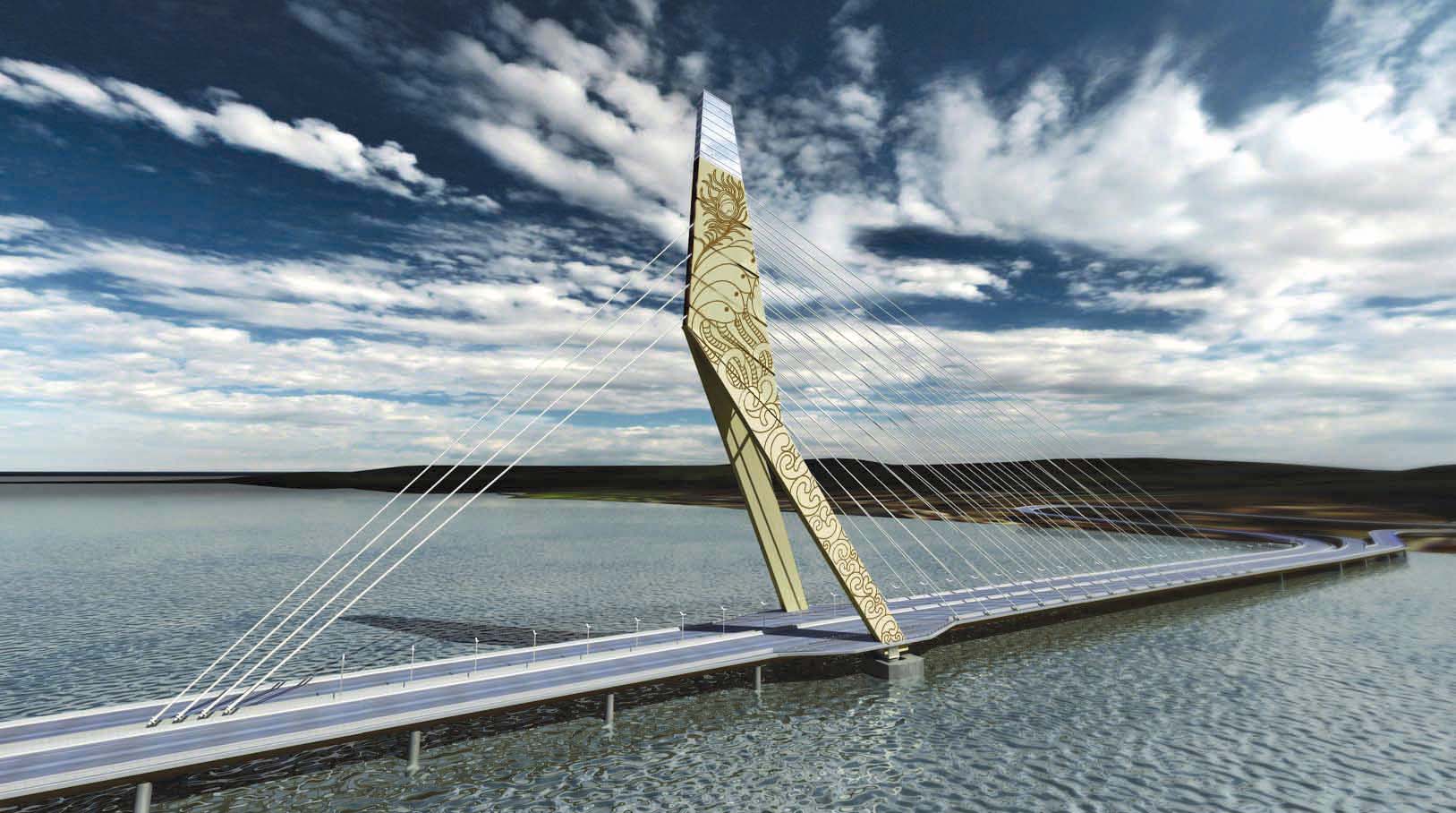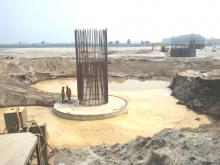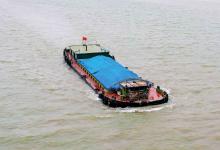A major new cable-stayed bridge is being constructed in India - Partha Bratim Basistha reports. In India the construction of a major cable-stayed bridge is underway that will boost connections from capital Delhi to its surrounding areas. The bridge is being built in a bid to ease growing interstate traffic movement between Delhi and the surrounding North Indian states of Punjab, Uttar Pradesh, Haryana and Himachal Pradesh. Named Signature Bridge, this is a landmark structure due to its design aesthetics and

The bridge will be a major landmark when complete
RSSA major new cable-stayed bridge is being constructed in India - Partha Bratim Basistha reports
In India the construction of a major cable-stayed bridge is underway that will boost connections from capital Delhi to its surrounding areas. The bridge is being built in a bid to ease growing interstate traffic movement between Delhi and the surrounding North Indian states of Punjab, Uttar Pradesh, Haryana and Himachal Pradesh.
Named Signature Bridge, this is a landmark structure due to its design aesthetics and the bridge will also speed up movement of traffic between the North and East of Delhi over India’s historical Yamuna River, when it opens to traffic in June 2015. The new bridge is being constructed 600m downstream of the existing crossing along the top of a barrage, built in the 1960s and which presently connects North and East Delhi.
Construction of the bridge involves setting up flyovers, loops and ramps comprising 1.8km eastern and 4.2km western approaches on either sides of the river. The approaches will be connected to the main 675m long, unsymmetrical cable-stayed bridge, which has dual carriageways of 14m each (four lanes in either direction) and with 1.2m central verge and maintenance walkways. The other key features are its 251m long span and bow shaped steel pylons measuring some 154m in height, with cable stays on one side and back stays on the other side.
Indian construction major, Gammon, is the contractor for the approaches costing close to US$560 million (INR 350 crore). Work for the main cable bridge valued at $1.01 billion (INR 631.81 crores) is by a joint venture of Gammon India, Cidade Brazil and Tensacciai of Italy. Delhi Tourism and Development Corporation (DTTDC) is the client and project management consultant for the project.
Being constructed in a highly seismic zone-4, executing the megaproject is not without multiple challenges. “The sloping rock profile of the area is the biggest challenge, requiring modification of methodology in foundation works,” said K Prakash, DGM Projects, Gammon, Signature Bridge Project.
Piling and foundation forms the major construction component of the project. Novel foundation solutions were used for the approaches over the river that will connect the main cable bridge. This was important due to the behaviour of the river during peak monsoon months in Delhi, when water flows above the danger zone. Furthermore, the rocky strata of the area posed additional challenges, requiring specific foundation techniques. In addition, the base load and the large dynamic load exerted on the approaches by the high traffic volumes were the other major factors to be considered for the foundation design.
Jose Kurien, chief engineer, DTTDC, Signature Bridge Project said, “Numerous hydrological studies were taken,” He explained that the team selected a foundation fixed into the rock, adding that a combination of well and pile foundation has been used on the rocky surfaces. The wells are 25m deep, with the piles embedded to a depth of 6m.
The Signature Bridge project is of note as it is only the second bridge project in India that features a combination of well and pile foundations. The first time this concept was used was in a project carried out by Gammon two years ago; a railway bridge in the North Eastern Indian state of Assam.
Extensive piling and well foundations support the P23 column. This carries the majority of the 6,600tonnes of tensile load exerted by the cable stressed pylon for the main bridge. The method has employed a crane to level the area for the wells. After this any loose material has been removed by the crane using a grab to prepare the well. Meanwhile hydraulic excavators fitted with rock breakers have been used to prepare the surfaces where there is softer rock.
The bridge project requires 18 well foundations in all, with much of this portion now complete. The bridge features nine open foundations, with this portion of the project having been completed.
In addition, Gammon India acquired two new reverse circulation drilling rigs during the second week of December 2014. These have been used for undertaking piling work on the sloping rock terrain at the offshore and onshore level of the river. The rigs were bought from Korean company Buma CE. The reverse circulation (or airlift system) uses compressed air injected into the drill pipe below water level just above the drill bit. This reduces the density of the internal water column and starts the circulation. The mixture of the water, air and cuttings is then flushed out through the drill pipe into settling tanks. This technique is usually used for hard rock drilling and piling in marine conditions. The rigs were brought in for the project to help with the work in areas of sloping terrain.
Work for the approaches has been carried out on prestressed precast concrete sections, which weigh from 68-100.5tonnes and have been erected on the piers set on open foundation. Bridge girder launchers, mobile telescopic boom cranes and a rail-mounted gantry crane have been used to erect the precast concrete sections. Gammon acquired a new rail-mounted gantry crane with a 40m span and 60tonne lifting capacity, which is being used on the project. The crane is lifting precast concrete sections for the approaches that connect the main bridge on the river and cannot be accessed by the heavy crawler crane.
Precast solutions were selected to cut construction time. In addition this helped the work given the tight space constraints, particularly at the western approach due to the proximity of a carriage depot belonging to1212 Delhi Metro Railway.
The solution was to set up a number of access areas with three intersections on the western approach of the existing road handling heavy vehicle traffic.
Work on the main section of the cable-stayed bridge which is presently underway, involves erection of the pylon structure and deck. This was fabricated at ZTSS China and weighs 6,500tonnes while the deck weighs in at 7,500tonnes. The heavy pylon base itself weighs in at 425tonnes and measures 11.3m x 6.3m x 4.3m. Construction of the main structure also involves the erection of the 154m high steel tower, which carries the head of the cable-stayed bridge. The steel tower features 55 blocks, which weigh from 120-180tonnes. The erection job for the main bridge is being carried out by a Terex Demag CC8800 crane, a 1,250tonne crawler lattice boom machine. Gammon India has hired the crane for a year from heavy lift specialist Sarens for the job.
An international team that includes some world-leading companies has been involved in this project. Apart from the main contractors, design work on the main bridge has been carried out by German company SBP while design for the temporary structure and methodology has been carried out by Italian firm DMA. Proof checking of the structure has been handled by leading French firm5549 Systra Virlogeux, while the erection stage analysis has been handled by Italian company De Miranda Associate. Geometry control support has been carried out by Len Gower Canada and third party quality assurance has been provided by Lloyds Register UK. Indian structural engineering specialist Tandon Consultants is the principal consultant for the projects. In addition, there are 10 other partners involved in the project involving the project consultants and managers, Maurer Sohne of Germany, the bearing supplier.
Because of the complexity of the project and to ensure appropriate project management coordination of all the stake-holders, DTTDC has set up dedicated File Transfer Protocol software (FTP). Contractors and stakeholders have been able to upload queries on required design changes or execution methodologies. This has then been examined by DTTC senior engineers followed by solutions. Contractors, consultants and other stakeholders in the project have been given access to FTP to carry out required design, structural or project execution modifications suggested by DTTDC. RSS
In India the construction of a major cable-stayed bridge is underway that will boost connections from capital Delhi to its surrounding areas. The bridge is being built in a bid to ease growing interstate traffic movement between Delhi and the surrounding North Indian states of Punjab, Uttar Pradesh, Haryana and Himachal Pradesh.
Named Signature Bridge, this is a landmark structure due to its design aesthetics and the bridge will also speed up movement of traffic between the North and East of Delhi over India’s historical Yamuna River, when it opens to traffic in June 2015. The new bridge is being constructed 600m downstream of the existing crossing along the top of a barrage, built in the 1960s and which presently connects North and East Delhi.
Construction of the bridge involves setting up flyovers, loops and ramps comprising 1.8km eastern and 4.2km western approaches on either sides of the river. The approaches will be connected to the main 675m long, unsymmetrical cable-stayed bridge, which has dual carriageways of 14m each (four lanes in either direction) and with 1.2m central verge and maintenance walkways. The other key features are its 251m long span and bow shaped steel pylons measuring some 154m in height, with cable stays on one side and back stays on the other side.
Indian construction major, Gammon, is the contractor for the approaches costing close to US$560 million (INR 350 crore). Work for the main cable bridge valued at $1.01 billion (INR 631.81 crores) is by a joint venture of Gammon India, Cidade Brazil and Tensacciai of Italy. Delhi Tourism and Development Corporation (DTTDC) is the client and project management consultant for the project.
Being constructed in a highly seismic zone-4, executing the megaproject is not without multiple challenges. “The sloping rock profile of the area is the biggest challenge, requiring modification of methodology in foundation works,” said K Prakash, DGM Projects, Gammon, Signature Bridge Project.
Piling and foundation forms the major construction component of the project. Novel foundation solutions were used for the approaches over the river that will connect the main cable bridge. This was important due to the behaviour of the river during peak monsoon months in Delhi, when water flows above the danger zone. Furthermore, the rocky strata of the area posed additional challenges, requiring specific foundation techniques. In addition, the base load and the large dynamic load exerted on the approaches by the high traffic volumes were the other major factors to be considered for the foundation design.
Jose Kurien, chief engineer, DTTDC, Signature Bridge Project said, “Numerous hydrological studies were taken,” He explained that the team selected a foundation fixed into the rock, adding that a combination of well and pile foundation has been used on the rocky surfaces. The wells are 25m deep, with the piles embedded to a depth of 6m.
The Signature Bridge project is of note as it is only the second bridge project in India that features a combination of well and pile foundations. The first time this concept was used was in a project carried out by Gammon two years ago; a railway bridge in the North Eastern Indian state of Assam.
Extensive piling and well foundations support the P23 column. This carries the majority of the 6,600tonnes of tensile load exerted by the cable stressed pylon for the main bridge. The method has employed a crane to level the area for the wells. After this any loose material has been removed by the crane using a grab to prepare the well. Meanwhile hydraulic excavators fitted with rock breakers have been used to prepare the surfaces where there is softer rock.
The bridge project requires 18 well foundations in all, with much of this portion now complete. The bridge features nine open foundations, with this portion of the project having been completed.
In addition, Gammon India acquired two new reverse circulation drilling rigs during the second week of December 2014. These have been used for undertaking piling work on the sloping rock terrain at the offshore and onshore level of the river. The rigs were bought from Korean company Buma CE. The reverse circulation (or airlift system) uses compressed air injected into the drill pipe below water level just above the drill bit. This reduces the density of the internal water column and starts the circulation. The mixture of the water, air and cuttings is then flushed out through the drill pipe into settling tanks. This technique is usually used for hard rock drilling and piling in marine conditions. The rigs were brought in for the project to help with the work in areas of sloping terrain.
Work for the approaches has been carried out on prestressed precast concrete sections, which weigh from 68-100.5tonnes and have been erected on the piers set on open foundation. Bridge girder launchers, mobile telescopic boom cranes and a rail-mounted gantry crane have been used to erect the precast concrete sections. Gammon acquired a new rail-mounted gantry crane with a 40m span and 60tonne lifting capacity, which is being used on the project. The crane is lifting precast concrete sections for the approaches that connect the main bridge on the river and cannot be accessed by the heavy crawler crane.
Precast solutions were selected to cut construction time. In addition this helped the work given the tight space constraints, particularly at the western approach due to the proximity of a carriage depot belonging to
The solution was to set up a number of access areas with three intersections on the western approach of the existing road handling heavy vehicle traffic.
Work on the main section of the cable-stayed bridge which is presently underway, involves erection of the pylon structure and deck. This was fabricated at ZTSS China and weighs 6,500tonnes while the deck weighs in at 7,500tonnes. The heavy pylon base itself weighs in at 425tonnes and measures 11.3m x 6.3m x 4.3m. Construction of the main structure also involves the erection of the 154m high steel tower, which carries the head of the cable-stayed bridge. The steel tower features 55 blocks, which weigh from 120-180tonnes. The erection job for the main bridge is being carried out by a Terex Demag CC8800 crane, a 1,250tonne crawler lattice boom machine. Gammon India has hired the crane for a year from heavy lift specialist Sarens for the job.
An international team that includes some world-leading companies has been involved in this project. Apart from the main contractors, design work on the main bridge has been carried out by German company SBP while design for the temporary structure and methodology has been carried out by Italian firm DMA. Proof checking of the structure has been handled by leading French firm
Because of the complexity of the project and to ensure appropriate project management coordination of all the stake-holders, DTTDC has set up dedicated File Transfer Protocol software (FTP). Contractors and stakeholders have been able to upload queries on required design changes or execution methodologies. This has then been examined by DTTC senior engineers followed by solutions. Contractors, consultants and other stakeholders in the project have been given access to FTP to carry out required design, structural or project execution modifications suggested by DTTDC. RSS









